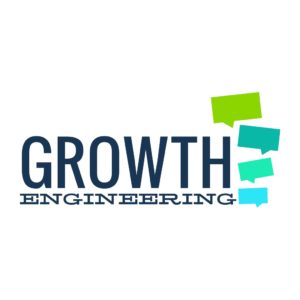The eLearning Business Case: How Adopting An Engagement Strategy Will Increase Your Training ROI
Whilst setting aside funds for training is a good start, organisational growth takes a much larger commitment. If eLearning is to be successful, it needs to be embraced at every level – from the higher-ups down to the workforce who are subject to the training. Many Learning Management System implementations fall at the first hurdle because L&D professionals fail to provide any real engagement strategy. If you fail to get your workforce engaged in their own development, you cannot expect your training campaign to be a success.

You wouldn’t sign up for a gym membership if you weren’t prepared to put in the time and effort it takes to get fit, lose weight, or bolster your biceps. Training is no different. If you’re not prepared to flex your engagement muscle, there’s little point of initiating the campaign in the first place.
Of course, support at every level depends on the quality of eLearning material presented. If the content is smart, relevant and informative, it is generally going to capture the imagination of learners. However, much more can be done to manipulate user engagement throughout eLearning campaigns. It is up to those in positions of leadership to develop an enticing engagement strategy by:
- Motivating staff to want to learn and offering a reward for doing so.
- Outlining and advertising the benefits of the training.
- Providing a clear, consistent message.
The diagram below details how we view engagement strategy. It starts with the creation of engaging learning content that is supported by L&D Professionals who then provide the engagement strategy for their workforce.

The key to engagement is providing an emotional hook. Effective learning revolves around the manipulation of our emotions. Gamification, the process of applying game mechanics to non-gaming environments, is a great tool for gripping learners emotionally. By adopting game mechanics like badges, awards, and leadership boards, you are adding an entirely new level of involvement.
These trinkets satisfy our basic human need for reward. They act as markers of our hard work. Upon collection, something in our brain says, ‘I like this and I want more’ and compels us to continue. Gamification is just one of our methods for creating user engagement. It is more than just a passing fad. According to a prominent Technology Research company, ‘Gamification will be a key trend that every CIO, IT planner and enterprise architect must be aware of as it relates to business’ (Garter Group, 2010).
Engaging your workforce during a training campaign is one means for ensuring that it earns the maximum ROI on investment possible. By failing to get your team gripped, you are committing yourself to earning only the minimum level of return on your investment.
Growth Engineering seek to raise user engagement through gamification and social learning. But our unique design methodology The Discovery Method can also raise levels of engagement throughout a workforce.
How The Discovery Method Can Increase ROI
Albert Einstein once said, ‘the only source of knowledge is experience’. We have taken that thesis and run with it. The Discovery Method bridges the divide between knowledge, practise, and experience. Whilst we are quoting some of history’s great minds, how about this from Aristotle, ‘For the things we have to learn before we can do them, we learn by doing them’. Our unique design methodology The Discovery Method puts you and your experiences at the centre of the learning process. Not only is it highly effective, it’s also an entertaining journey.
In 2010, Russell Poldrack a University of Texas psychologist published a report that looked to establish the best means ‘for effective studying’. He found that if the pattern of activity present in the learner’s brain is the same each time they study that information, it is more likely to ‘stick’. In other words, we learn new information quicker the more we relate them to existing concepts within the mind. (Russell Poldrack, Science, 2010)
The Discovery Method is moulded upon this psychological insight. It draws from concepts already located within your brain (your work place experiences) and challenges you to derive fresh information from them. You are not dealing with new, hard to grasps concepts – all the information you need is already present in your head. You just need to unlock it.
The Discovery Method asks you to take work-place examples and analyse and reflect upon them. In essence, you are using these familiar starting points to begin a voyage of discovery. It then uses role–playing situations and scenarios to grant the learner an opportunity to establish right behaviours and attitudes. It forces students to break down their experiences and define what worked and what did not work.
We do not ask you to read through reams of text and memorise answers – after all, it has been found that ‘Elements such as video or online quizzes do not appear to influence the amount that students learn in online classes.’ (Barbara Means, International Department of Education Report) The Discovery Method instead uses your own experiences to determine an effective learning environment.
Yes, eLearning needs assessment sections that measure your development. But the real focus is on giving you an opportunity to apply your knowledge to real-world contexts. To draw from your own unique perspective and put you in the position where you need to use your nous to work towards a happy conclusion. We do not like to ask ‘What should you do?’ We prefer to ask: ‘What would you do?’ This subtle change makes all the difference.
Here are some interesting figures from psychotactics.com: Learners retain approximately…
- 75% of what they learn when they practice what they learned.
- 50% of what they learn when engaged in a group discussion.
- 30% of what they learn when they see a demonstration.
- 20% of what they learn from audio-visual.
- 10% of what they learn when they’ve learned from reading.
- 5% of what they learn when they’ve learned from lecture.
As you can see, the more active an individual is in their learning, the more likely it is to stick. All too often, the places where the biggest emphasis is placed on the acquisition of knowledge through structured learning are not the kind of places where you get to put this knowledge to good use. In the classroom, you are usually asked to soak up information passively – paying little attention to any real life application that it may have. Indeed, the only time this knowledge gets applied is when you’re forced to recall it in order to pass an assessment or exam.
Have you ever sat through a lecture or a classroom training session and wondered what you were doing there? You can often get the feeling that you would have benefited equally simply by getting hold of a copy of the lecture notes or finding the curriculum online. Simply restating information that is already available in other literature is not the most effective way of learning and it certainly does not help present learning as a particularly attractive or inspirational activity.
There are also numerous studies (Cavus et al. 2007; Dinov, Sanchez and Christou 2008; Gao and Lehman 2003; Zhang 2005) that offer evidence supporting the hypothesis that the more control a learner has over his learning process and the more active they are (through either active or interactive learning experiences in our conceptual framework) the larger the learning gains. ‘Studies indicate that manipulations that trigger learner activity or learner reflection and self-monitoring of understanding are effective when students pursue online learning as individuals.’ (Barbara Means, International Department of Education Report)
Consider this. How long would you stick by a removals company that lost 80% of your goods whilst in transport? Would you keep going back and forth, spending more money to make sure you were able to transport everything you need? Or would you look for a more effective method?
The answer is obvious – you would look for a different means of getting the job done. Why should it be different in the training environment?
In the training world, classroom learning is predominantly made up of lectures, reading, and some audio-visual content. It may also present students with demonstrations and the occasional group discussion (though time limitations often curtail this). It rarely ever gives students an opportunity to ‘practise’ right behaviours. In essence, those who undergo classroom training will be lucky to retain 30% of what they have learned. On the other hand, those who put what they have learned into practise, as the Discovery Method demands, will retain a lot more information.
The use of role-plays and simulations has also been shown to boost learning performance. In 2008, a study was produced that detailed the impact simulations within a web-based environment had on knowledge retention. The findings proved that ‘computer based simulations’ helped to aid the ‘learner’s performance’ and improve ‘knowledge gain when compared with online instruction with no simulation’ (Castaneda, 2008).
There may be some who remain unconvinced. Old methods of learning and knowledge retention have worked up until now, so why change things? Business training campaigns have been successful without embracing a learning methodology that puts practise front-and-centre. It’s worth questioning, however, exactly how successful these campaigns have been. What level of knowledge retention was achieved? Was the ROI lower than training campaigns that have adopted a more forward thinking learning methodology?
The answer, in most cases will surely be ‘Yes’.
Conclusion
The business case for eLearning is crystal clear. It’s a three-pronged attack on those naysayers who remain disenchanted by the power of modern technology to provide an inspirational platform for learning and self-development. It’s cheaper, more effective, and broader in scope than its classroom equivalent. Throughout the numerous reports that detail eLearning’s rise to prominence a noticeable through line can be deduced: this is a powerful tool that can be used to engineer impressive results at a fraction of the cost commonly associated with training.
As a tool for improving your organisation’s ROI when it comes to training – it’s unparalleled. There are a wealth of case studies out there that prove just how effective it can be. Furthermore, it comes replete with staying power. Learning Management Systems can act as knowledge shares and offer your team an opportunity to prove their expertise and provide an outlet for self-expression.
As with any training campaign, it’s reliant on engagement at each and every level. The top brass need to embrace it as much as the workforce and there needs to be a clear strategy in place to ensure that the training delivers the maximum ROI possible. Even here, eLearning holds an advantage over its classroom alternative. The seamless integration of social learning and gamification into the world of online learning offers endless opportunities for raising engagement and powering an effective training programme.
Finally, there’s Growth Engineering’s unique learning methodology, The Discovery Method. By adopting this approach, online learners can enjoy levels of interactivity and involvement that just can’t be matched in the classroom.
So not only is our eLearning cost-effective and remarkably efficient, it is good fun too.










